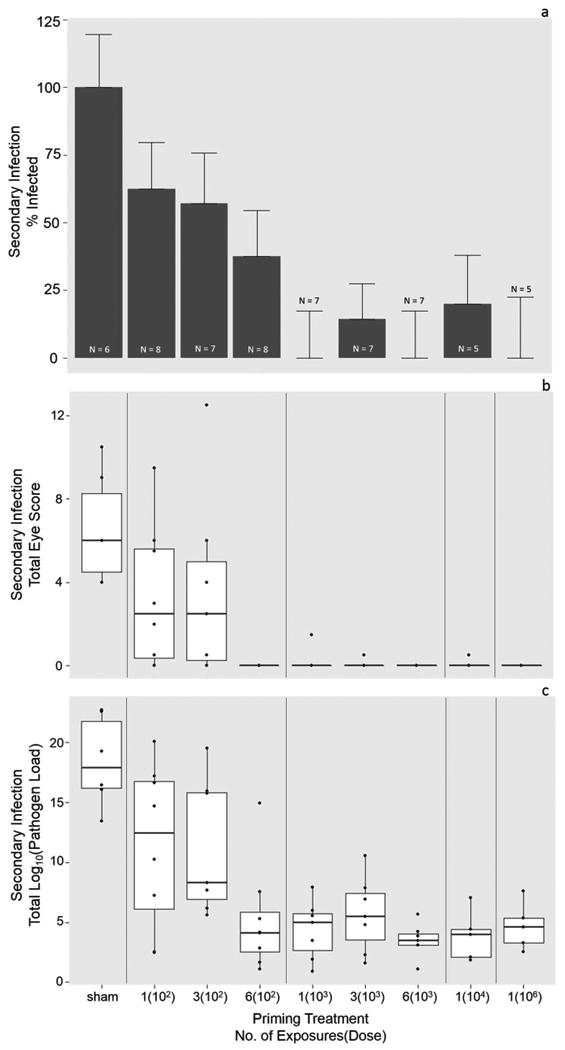Figure 3.

Probability of infection (a), disease severity (b) and infection severity (c) in response to a secondary high-dose challenge 39 days after priming exposures. a) House finches previously primed with higher doses of Mycoplasma gallisepticum showed a lower probability of infection (Y or N) in response to a secondary high dose challenge. Error bars represent standard error of the proportion infected, and the y-axis extends to 125% to visualize error bars. b) House finches primed with a greater number of exposures and higher doses of Mycoplasma gallisepticum showed significantly lower disease severity upon a high dose challenge. For visual clarity, eye scores (scale 0-3) for both eyes were summed across the course of secondary infection. Each point represents an individual. c) House finches previously primed with higher doses of Mycoplasma gallisepticum showed significantly higher levels of protection (i.e., significantly lower pathogen loads, y-axis) upon a high dose challenge. Again here, for visual clarity, conjunctival pathogen loads were summed across the course of secondary infection. Each point represents an individual.
